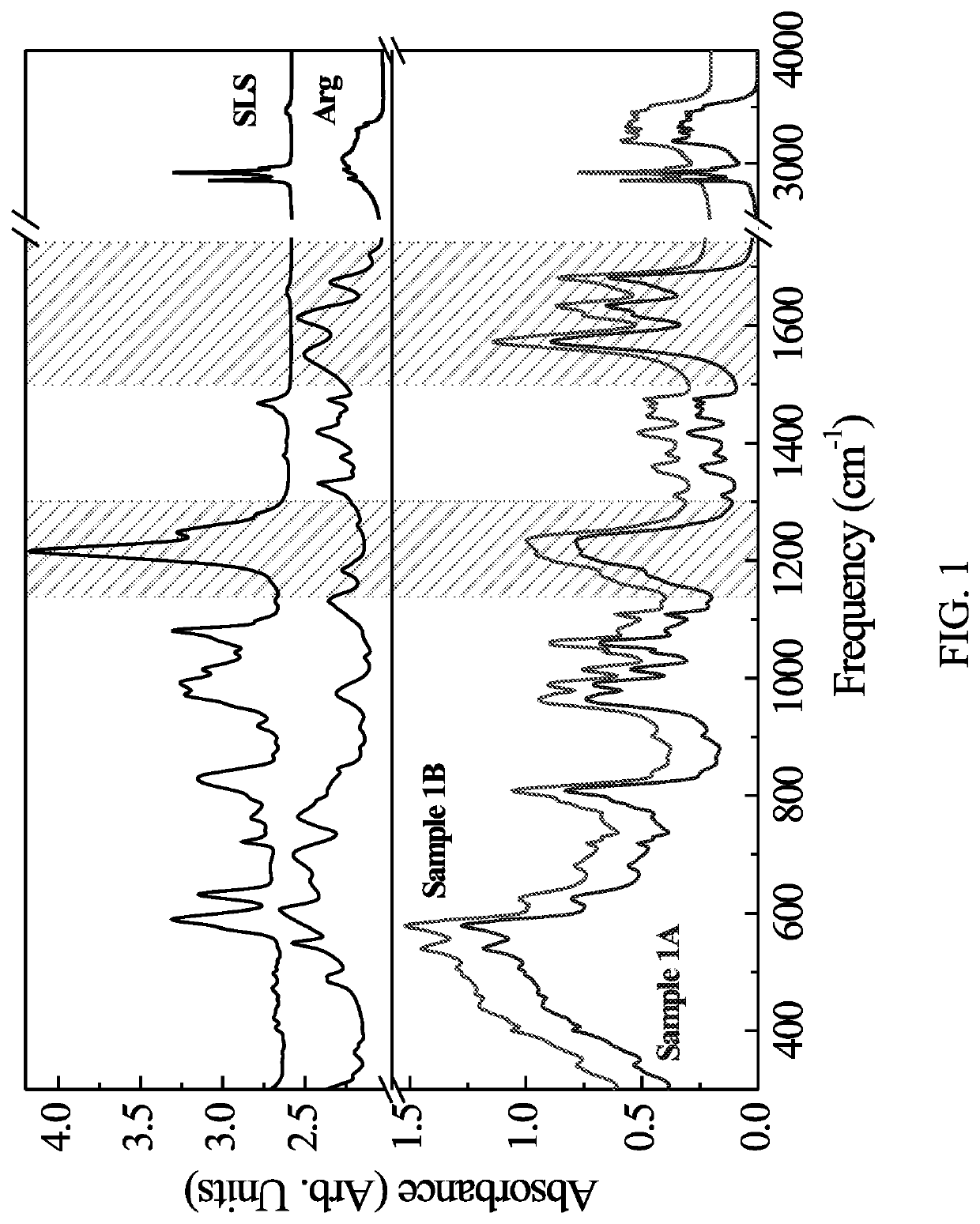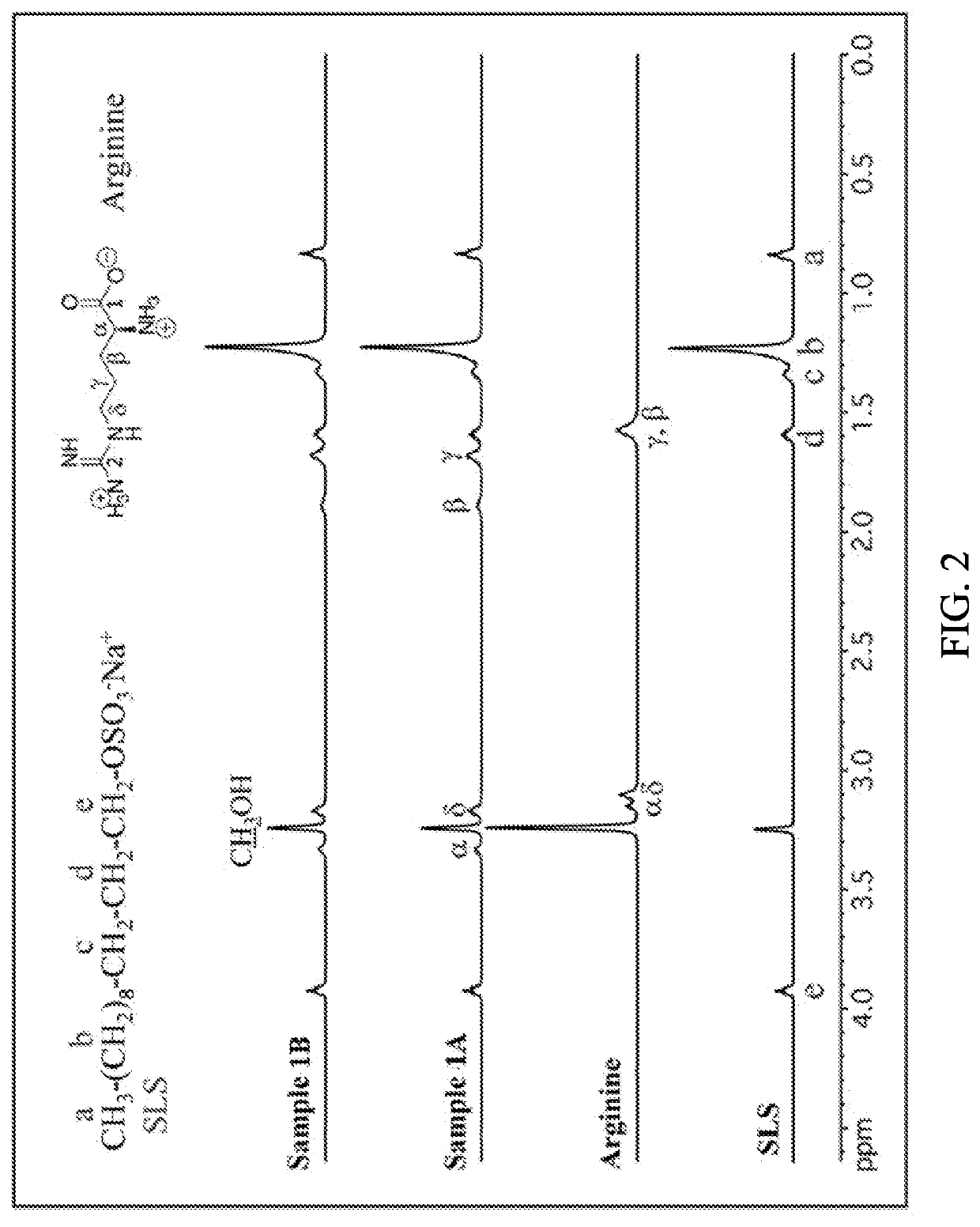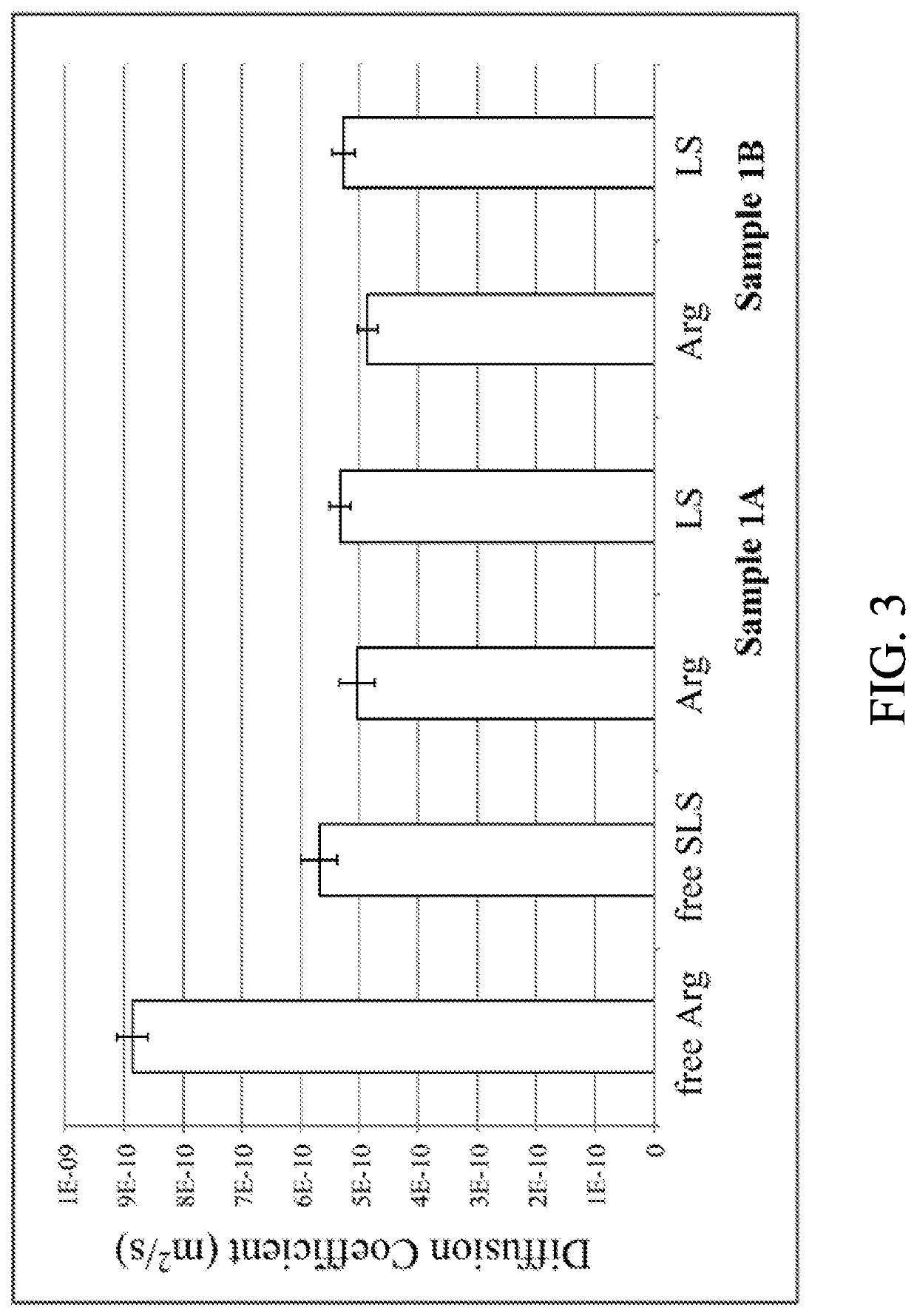Zinc - Amino Acid - Lauryl Sulfate Complex with Antimicrobial Activity
a technology of lauryl sulfate and zinc amino acid, which is applied in the field of zinc-amino acid-lauryl sulfate complex with antimicrobial activity, can solve problems such as reducing the sensitivity of teeth, and achieve the effects of reducing bacterially-generated biofilm and plaque, reducing gingivitis, and inhibiting acid erosion of enamel
- Summary
- Abstract
- Description
- Claims
- Application Information
AI Technical Summary
Benefits of technology
Problems solved by technology
Method used
Image
Examples
example 1
on and Characterization of Zinc-Arginine-Lauryl Sulfate Complex
[0101]Sample 1A: SLS powder was dissolved in 20 g of H2O followed by pH adjustment with HCl to pH≈7. Arginine and ZnCl2 were dissolved together in approximately 47.9 g of H2O (Table 1) resulting in a clear solution. The pH of this mixture was adjusted with HCl to pH=7 followed by its addition to previously prepared SLS solution. A formation of white precipitate occurred immediately. The precipitate was filtered, washed with approximately 200 mL of deionized water and dried at room temperature.
[0102]Sample 1B: SLS powder was dissolved in 20 g of H2O followed by pH adjustment with HCl to pH=8. Arginine and ZnCl2 were dissolved together in approximately 47.9 g of H2O (Table 1) resulting in a clear solution. The pH of this mixture was adjusted with HCl to pH=8 followed by its addition to previously prepared SLS solution. A formation of white precipitate occurred immediately. The precipitate was filtered, washed with approxim...
example 2
on and Characterization of Zinc-Lysine-Lauryl Sulfate Complex
[0112]Three samples of zinc-lysine-lauryl sulfate complex were prepared in this study. Samples 2A and 2B were prepared from the ZLC pre-mix and SLS using the ratios of ZLC:SLS:H2O as shown in Table 3. Sample 2C was prepared from ZnCl2+Lysine and SLS and was designed to mimic the preparation of [Zn(Arg)2](LS)2 complex described in Example 1. In addition to samples 2A, 2B and 2C, a control solution (sample 2D) without zinc was also prepared. The Lysine-SLS solution at pH=8 remained clear; no visual signs of precipitation were apparent confirming that the zinc ion is needed for the precipitate formation to occur.
TABLE 4Raw materials and their quantities used inpreparation of samples 2A, 2B, 2C, and 2D.Sample 2BSample 2CSample 2DReagent (g)Sample 2ApH = 8pH = 8ControlZnO2.102.10——ZnCl2——1.07—AnhydrousL-Lysine-HCl9.449.44——L-Lysine——3.24 3.24HCl (conc.)1.371.36——(for ZLCpre-mix)H2O15.02 15.00 20.01 20.09(for SLS)H2O14.99 16.51 ...
example 3
rial Testing
[0128]The chelation of zinc can modify its efficacy as an antibacterial agent. To determine the antibacterial activity of zinc-amino acid-lauryl sulfate complexes, experiments were conducted to measure the metabolic inhibition of S. mutans after treatment with Zn(NO3)2, ZLC, Zn(Lys)2(LS)2 (prepared in Example 2, sample 2C), [Zn(Arg)2]2+, Zn(Arg)2(LS)2 (prepared in Example 1, sample 1B), and SLS. S. mutans is one of the prevalent bacteria present in the oral cavity. A concentrated suspension of S. mutans in 135 mM KCl was treated with a known concentration of zinc salt to obtain a final zinc concentration of 2.5 ppm. In the case of SLS, an equimolar amount of SLS was added to match the concentration of LS in the samples of Zn(Lys)2(LS)2. Using an autotitrator (Methrom Titrando 902) equipped with a 0.01M solution of KOH, the bacterial suspension was equilibrated to pH=7. After equilibrating, glucose was added to the solution. The autotitrator maintained the pH at 7 through...
PUM
| Property | Measurement | Unit |
|---|---|---|
| ionic strength | aaaaa | aaaaa |
| diffusion time | aaaaa | aaaaa |
| volume | aaaaa | aaaaa |
Abstract
Description
Claims
Application Information
 Login to View More
Login to View More - R&D
- Intellectual Property
- Life Sciences
- Materials
- Tech Scout
- Unparalleled Data Quality
- Higher Quality Content
- 60% Fewer Hallucinations
Browse by: Latest US Patents, China's latest patents, Technical Efficacy Thesaurus, Application Domain, Technology Topic, Popular Technical Reports.
© 2025 PatSnap. All rights reserved.Legal|Privacy policy|Modern Slavery Act Transparency Statement|Sitemap|About US| Contact US: help@patsnap.com



